Kyoto Tradition On The Tango Peninsula - Try Soy Sauce, Sake, And Local Crafts!

Tango Peninsula, an hour and a half away by car from Kyoto, is home to local artisans creating Tango silken crepe fabric, Japanese sake, soy sauce, salt, and other high-quality products. In this article, we introduce five recommended spots on this special
Tango Peninsula – Another Side of Kyoto by the Sea
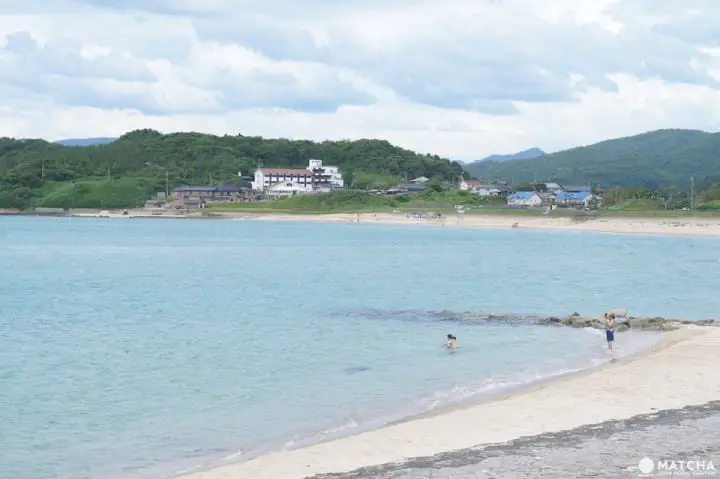
Tango Peninsula, approximately 130 kilometers north of JR Kyoto Station, is a nature-rich area, filled with mountains and bordering a vast sea. It is a sightseeing spot famous for Amanohashidate, one of Japan’s Three Scenic Views (*1), and the charming Kyoto port town of Ine.
This area is known for its delicious seafood, locally-produced rice, vegetables, and Japanese sake, resulting in a steady flow of travelers. We visited five innovative businesses here incorporating local Tango tradition.
*1 Japan’s Three Scenic Views: places with exceptionally beautiful scenery in Japan. The other two scenic views are Matsushima, Miyagi Prefecture and Miyajima, Hiroshima Prefecture.
1. KUSKA – Fashion Statements With Local Textiles
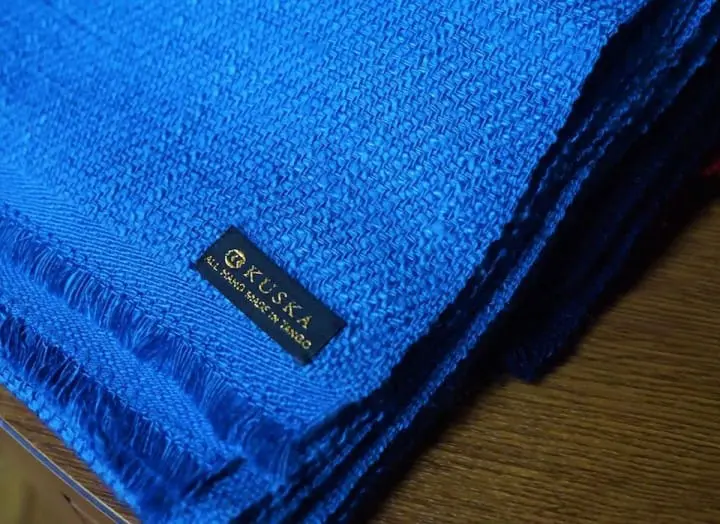
Picture courtesy of Tangonian
KUSKA is a fashion brand utilizing Tango silk crepe, which is made using a technique that has been passed down for generations on the peninsula. The brand sells various items that are completely handmade by artisans in Kyotango. Everything from the silk reeling and dyeing, to hand sewing and finishing the final product, is done locally.
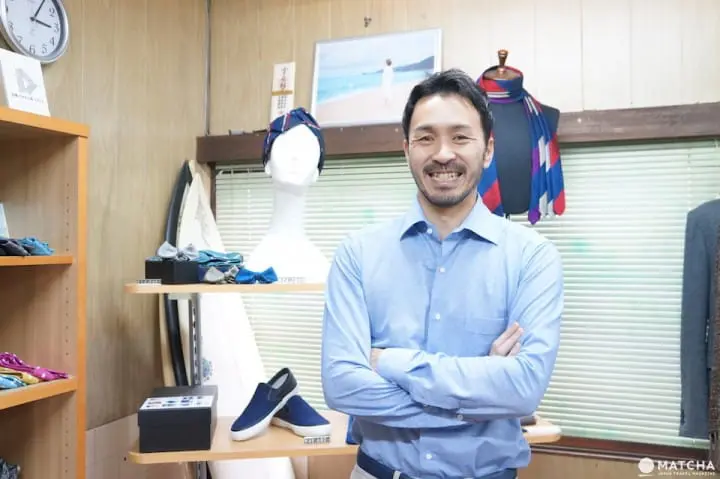
We were shown around the textile workshop by Mr. Yasuhiko Kusunoki, the director of KUSKA Co., Ltd. to learn why the brand specializes in handwork.
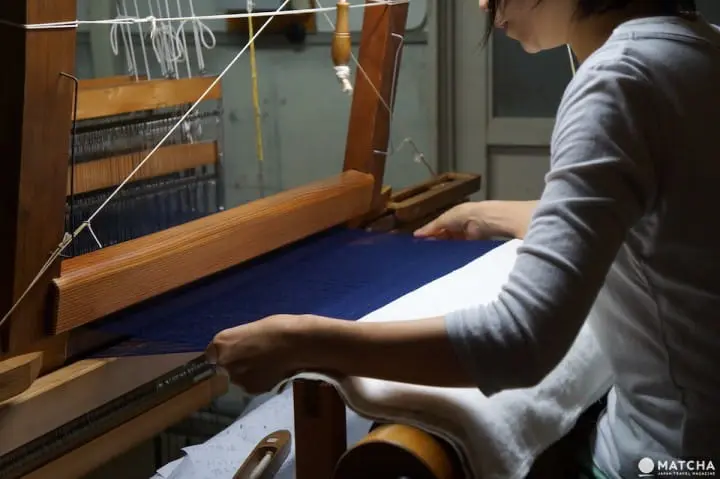
When we entered the workshop, we could hear the rhythmical sounds of hands at work.
4,000 warp threads (a series of threads that run from front to back) are needed to create the fabric. This process takes more time compared to weaving by machine. However, there is extra space incorporated into the fabric due to it being weaved by hand, resulting in a soft texture. This is how the unique feel and texture is created in the final fabric.
Mr. Kusunoki said, “We create patterns and items unique to KUSKA not by designing products with pre-made fabrics, but by creating the design based on the material itself.”
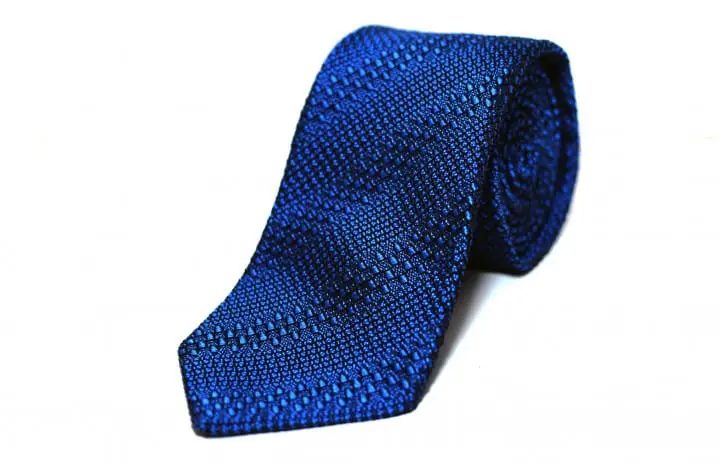
Picture courtesy of KUSKA
KUSKA’s is most known for their Tango Jacquard Tie (Tango Blue: 16,200 yen plus tax). The blue, inspired by the beautiful Tango sea, is appropriately named “Tango Blue.”
The finished products can be purchased directly at the workshop or from their shop in Kyoto as well as online (Japanese). Definitely please check them out.
You can tour the workshop if you make an appointment in advance. Send an email to info@kuska.jp (English is understood).
2. Yosa Musume Brewery – Japanese Sake with Local Rice
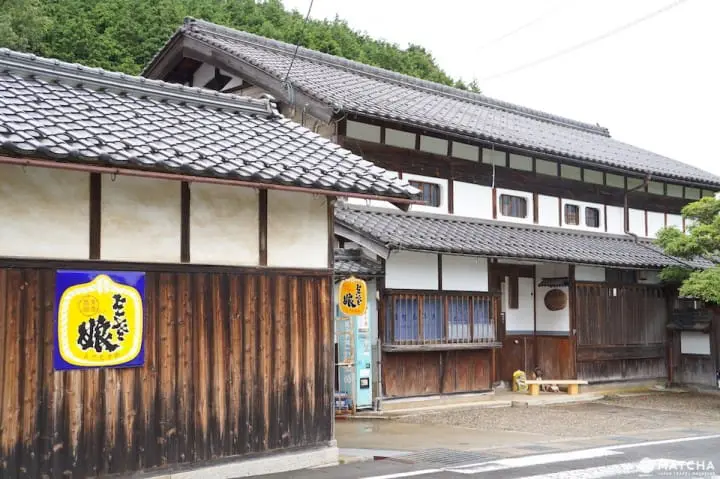
Yosa Musume Brewery has been producing sake in the region for around 130 years, since its establishment in 1887. In fact, the Tango Peninsula has flourished with its sake brewing for many years. There are ten breweries in the area, each brewing drinks with distinctive flavors.
Yosa Musume Brewery makes alcohol with rice harvested within two kilometer from the brewery.
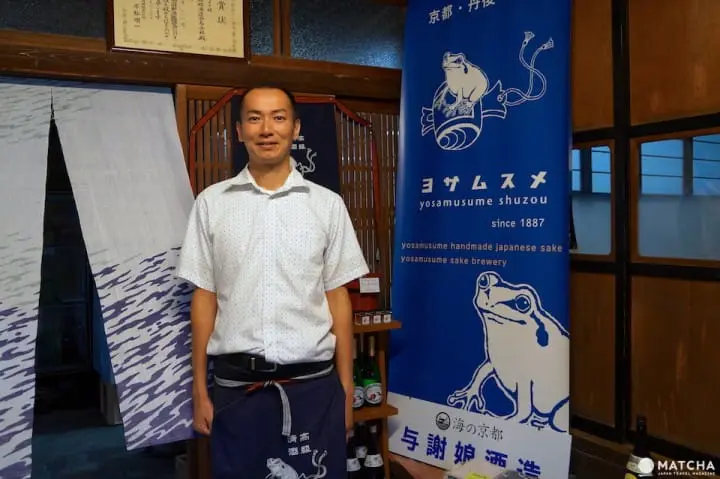
Brewery tours are also available Mr. Shiro Nishihara, the sixth generation kuramoto (*2) and toji (*3), will be your guide.
He told us, “It’s very fun brewing sake using local rice and thinking of our community.”
*2 Kuramoto: a person who produces and sells sake.
*3 Toji: the supervisor in Japanese sake brewing.

Fermented moromi (*4) is made to ferment even further at a low temperature using pure, soft water from nearby Mt. Oe. This results in a flowery, gentle taste, which has become characteristic of Yosa Musume Brewery products.
*4 Moromi: soft solids in distilled liquids that are used to create Japanese alcohol. They become the base for Japanese sake.
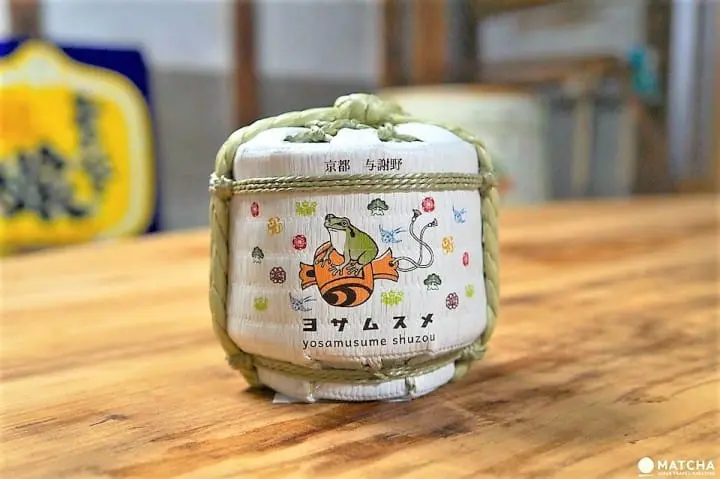
After touring the brewery, how about Japanese sake as a souvenir?
Yosa Musume Special Junmai Sake in a Komodaru Barrel (2,000 yen plus tax) is compact and makes the perfect gift. The container was inspired by the barreled sake often seen during celebratory occasions. An adorable illustration of a frog, the mascot of Yosa Musume Brewery, is featured in the center.
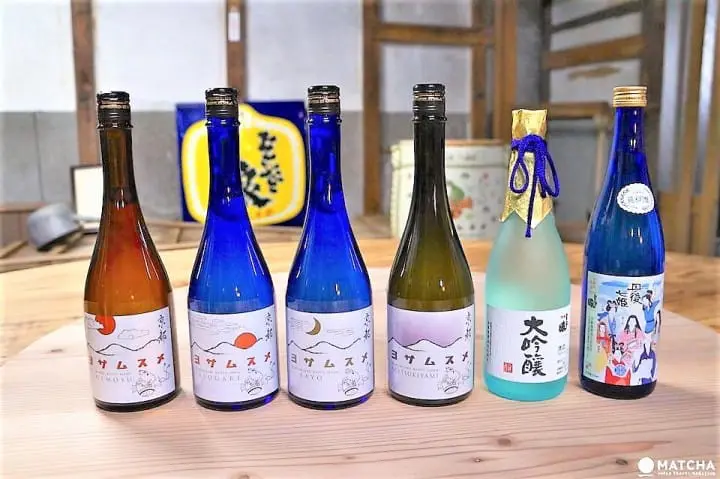
You’ll also find bottles with cute labels and other unique items.
Sake brewing takes place when it is cold, so we recommend visiting during the winter if you wish to see the process in action. Those who wish to tour the brewery should make a reservation in advance as the workshop does become busy.
Reservations should be directed to: yosamusume@kyt-net.jp (English support available).
3. Onojin – Soy Sauce and Miso with High-Quality Ingredients
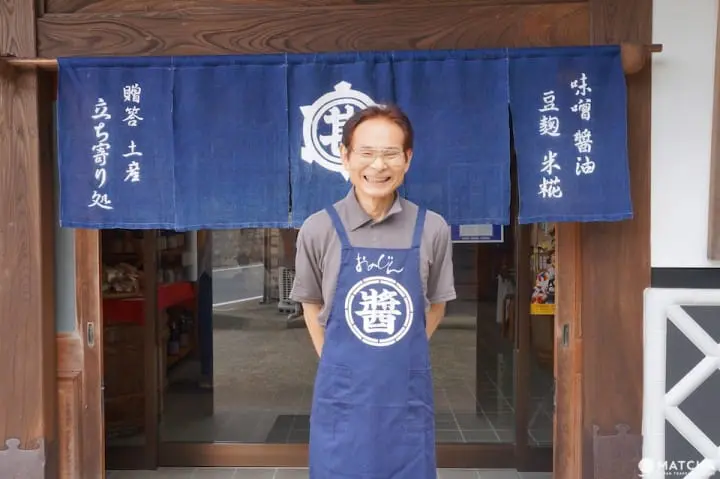
Mr. Jinichi Ono, the president of Onojin
Onojin was founded in 1912. The brewery makes miso and soy sauce, vital components of Japanese cuisine, in a traditional way.
As many local ingredients as possible are used to make products that customers can trust in, from the raw ingredients to the final product. The soy sauce from Onojin is used at famous hotels in Kyoto and even in Spain.
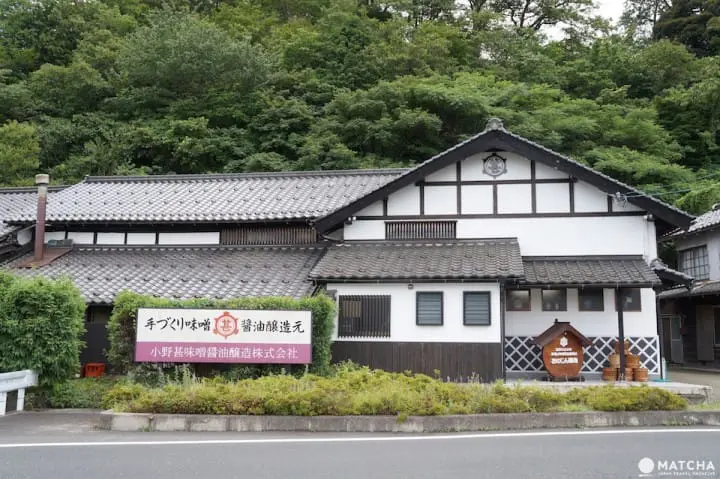
The brewery has a soy sauce tasting experience with explanations translated into English, which detail the ingredients and production method. International guests will also be able to enjoy themselves during the experience.
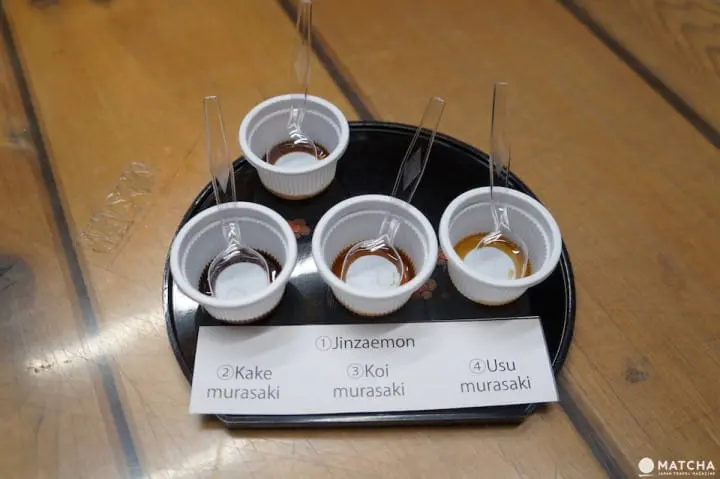
Here is the sample tasting of four types of soy sauces. The soy sauces vary in flavor depending on their brewing time and ingredients. Each soy sauce is recommended for different dishes such as sashimi and stewed foods.
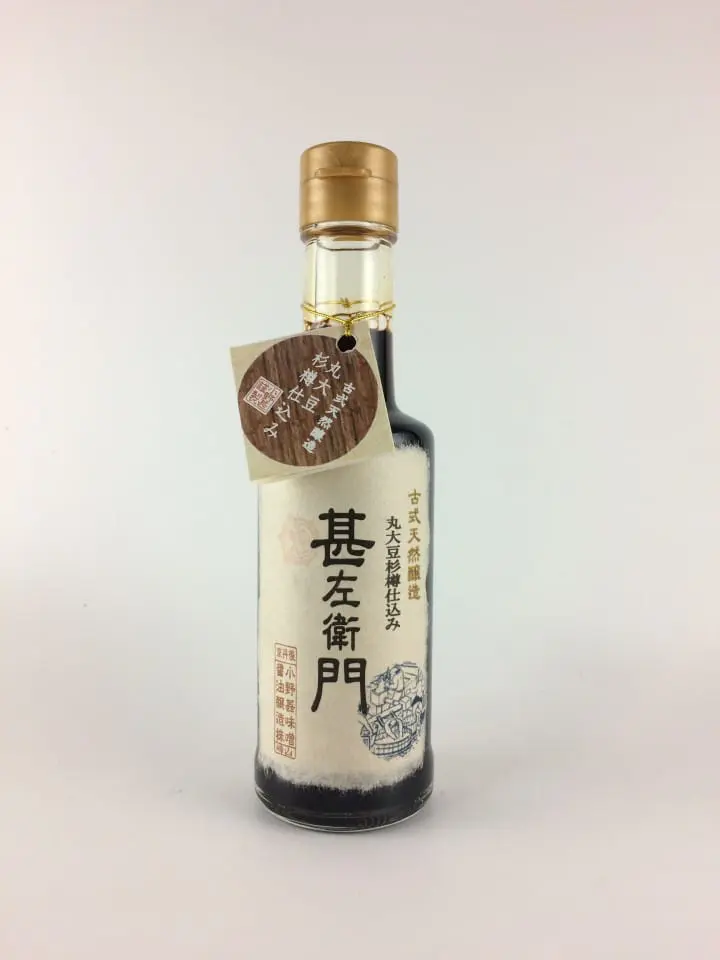
Picture courtesy of Onojin
The brewery’s most popular product is Jinzaemon (1,296 yen plus tax), a soy sauce matured in a traditional method, over a course of three years in a cedar barrel. It has a mild and smooth flavor created using local soybeans along with domestically produced wheat and salt.
Make your reservation a week in advance if you wish to participate in the soy sauce tasting. Reservations can be made by contacting info@onojin.com (English is understood).
4. uRashiMa – A Pizzeria Specializing in Local Ingredients
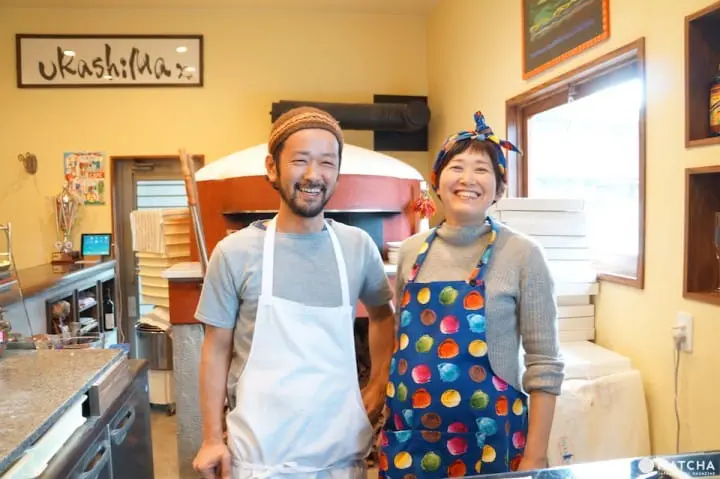
uRashiMa is a pizzeria and bar that serves Neapolitan cuisine made with local ingredients. Mr. Hideo Fujiwara exercises cooking skills in a restaurant remodeled from his home.
Mr. Fujiwara participated in a Neapolitan pizza competition held in Naples, Italy, in 2012 and was awarded second place in the competition. He also spent many years baking pizza in Kobe, famous for its Italian cuisine, but later returned to the Tango Peninsula. Connecting with the community and fishermen helped spark a passion for sharing Tango's food, resulting in the opening of the restaurant.
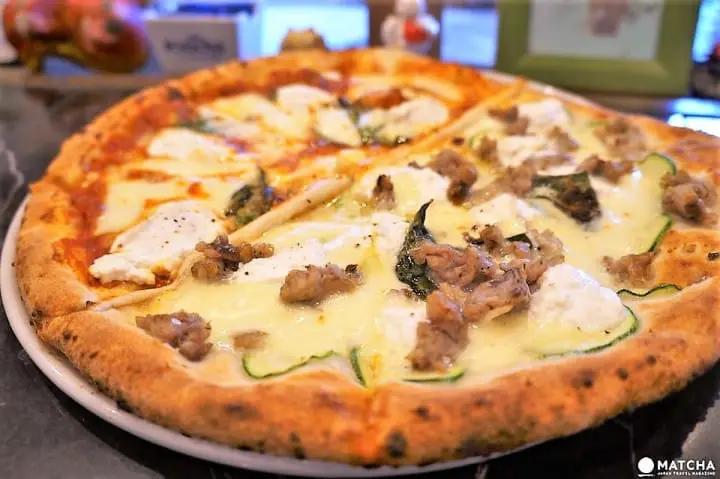
We recommend the Chef’s Pizza, which is made by Mr. Fujiwara with whichever ingredients happen to be in season at that time. He will stretch and bake the dough right in front of you, so you can enjoy the pizza-making process before you eat! (*Prices depend on the ingredients used.)
5. Kotohiki Salt – Created from the Purest Saltwater

The saltwater near the coast of Kotohiki Beach is famous for its extreme clarity and purity. Kotohiki Salt is a manufacturer that creates salt by heating the saltwater obtained near Kotohiki Beach.
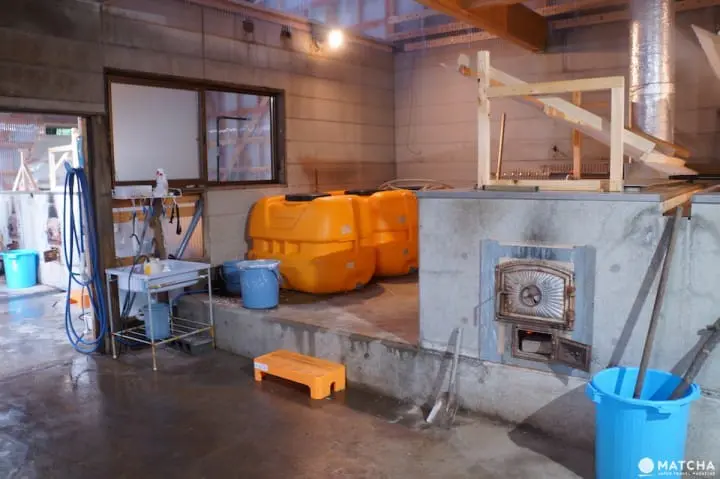
There are four cauldrons in the workshop. The workshop specializes in heating water in a traditional way, over the course of several days and using heat from firewood.
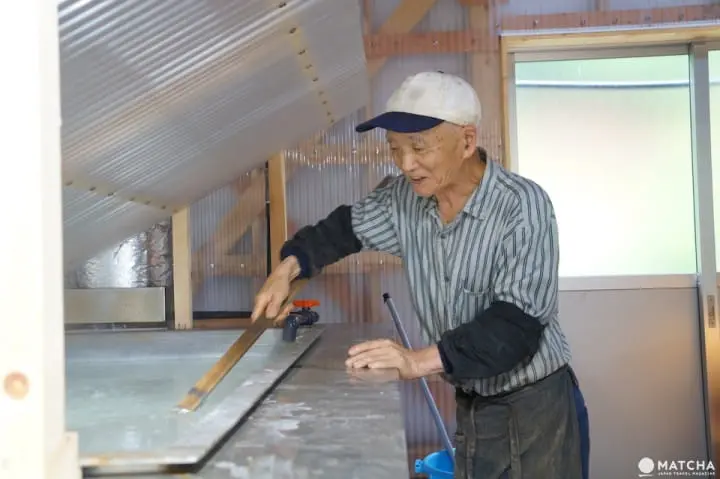
A salt craftsman, who is lovingly nicknamed “Salt Grandpa,” takes great care to make the salt every day. Kotohiki salt is created with 100% saltwater which has a mild flavor and lots of minerals.
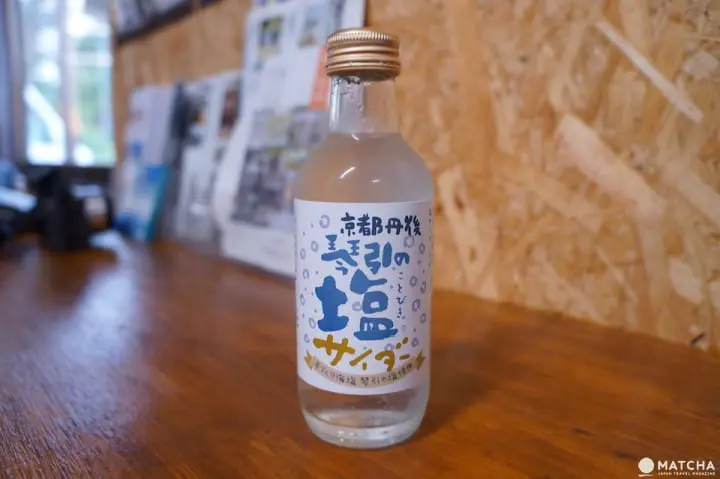
We suggest Kotohiki Salt Cider (200 yen plus tax *A special workshop price). The refreshing saltiness enhances the sweetness of the cider. You can also participate in a salt-making if you make a reservation at least three days in advance which we also highly recommend. Workshop tours are held as needed.
Make reservations by sending an email to info@tango-kaiyu.com (English support is unavailable).
Learn More About the Tango Peninsula
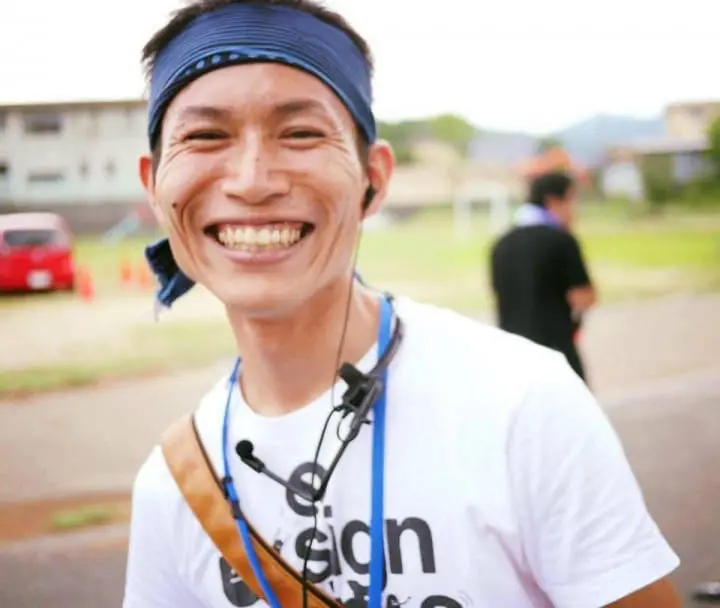
Picture courtesy of Tangonian
During our trip, we were led by Mr. Keiji Nagase, a local guide from Kyotango. Tangonian (Japanese), where Mr. Nagase works as a representative, offers guide customizeable services for Tango to match each individual’s interests.
They offer in-depth tours on Tango Peninsula in English, so definitely consider this service if you’ll be visiting for the first time or want to learn more about Tango. They will also provide support for you in areas where it is difficult to find English support. For details on fees and destinations, please direct your inquiries to tangonian.k@gmail.com (English support available).
Access From Osaka or Kyoto
Tango Peninsula is a region name for Miyazu, Kyotango, Ine, and Yosano, encompassing a surface area of about 845 square kilometers. Head to the front of Kyotango City Hall if you are traveling from Osaka. Those traveling from Kyoto should go to Amanohashidate Station (Miyazu).
Access from Osaka
Access from Osaka to the Tango area is most convenient by the Tango Kairiku Kotsu express bus. The table below is a rough estimate of travel time and fees to the front of Kyotango City Hall where you’ll find Onojin.
| Terminal | Required Time | One-Way Fare |
| Hankyu Umeda Bus Terminal | 3 hours 20 minutes | 3,100 yen |
| Shin-Osaka Hankyu Building | 3 hours 11 minutes | 3,100 yen |
| Osaka Airport | 2 hours 59 minutes | 2,900 yen |
Advance reservations are required to board the bus as all seats are assigned. Please make your reservations at their official website (Japanese). Reservations can be made starting from a month in advance.
Access from Kyoto
Take the limited express train from JR Kyoto Station to Amanohashidate Station on the Kyoto Tango Railway. The train ride on the Limited Express Hashidate is two hours and three minutes long with unreserved seats priced at 3,880 yen.
Use Rental Cars
Tango Kairiku Kotsu Ltd. (Japanese) buses service the peninsula, allowing you to travel to your destinations by public transportation.
However, it is recommended to rent a car for convenience, as the time schedule and the number of buses will vary. This may result in you needing to walk from the bus stops to your destination. Nippon Rent-A-Car is a rental shop near Amanohashidate or Mineyama stations. Be sure to make an advance reservation from their official website (Japanese).
Discover the Tango Peninsula!
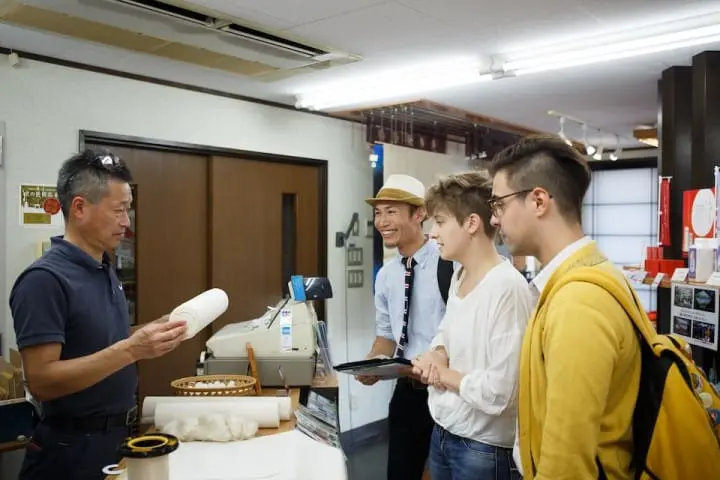
Picture courtesy of Tangonian
You’ll find items and food with a long history and tradition in Tango Peninsula, influenced by the mountains, sea, and local residents. Meeting the people striving to create new crafts while utilizing the region’s abundant resources may just be the greatest charm to traveling to the peninsula.
We're sure you'll fall in love with the Tango Peninsula as well, with its delicious sake and cuisine, and the underlying passion for creation and love for their community from the people of this region. Everyone should make a visit to the peninsula!
In cooperation with Tangonian
Kyoto / Kameoka 「遠くて近い」を探りながら、肌で感じる面白さを綴っていきたいです。




































![[2026] Top 5 Strawberry Picking Spots in Tokushima, Naruto| Farms and Access Guide for January to May](https://resources.matcha-jp.com/resize/720x2000/2025/03/06-227165.webp)
![[Yamanashi/ Hokuto City] 4 Hot New Spots Opening in 2026](https://resources.matcha-jp.com/resize/720x2000/2025/12/12-252747.webp)


